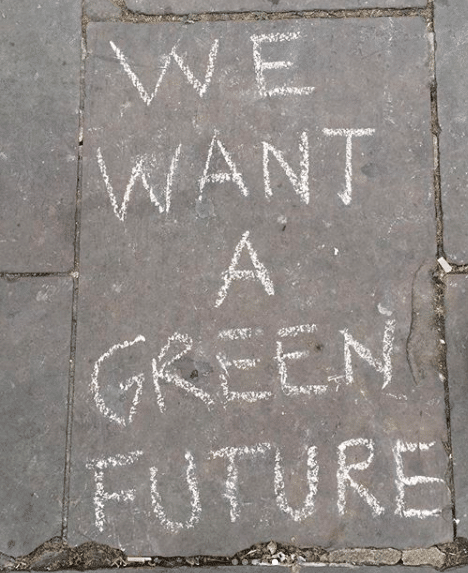
Top Tips For Sustainable Living
Part 1
By Ingrid Bååth and Rhianna Davies-Smith
The EcoWarriors: two girls at the forefront of sustainable living, sharing top tips for sustainable living, for anyone at home trying to make a difference, especially in times like these. Follow this series of blog posts starting from Part 1.
Is being sustainable expensive?
One of the biggest misconceptions we encounter when we tell people about our lifestyles is that it must be expensive to live sustainably and vegan. The answer is simply no, it’s not. We are here to give you top tips for sustainable living and initiate change.
Yes, it does take some more planning and it can take up a lot more time to think about the environmental consequences of your actions than simply going about life as socially constructed and encouraged by modern society – but we don’t find it any more expensive. Some of the cheapest things you can buy have lower impacts on the planet and are generally accessible in bulk such as rice, beans, grains and pulses.
Let us explain. As an eco-conscious consumer, a lot of time is dedicated to thinking about purchases and making pros and cons lists. Very little time is taken actually buying stuff. We know that what many are interested in is knowing how to make their cupboards look like Pinterest boards and how to make their cluttered bedrooms look like minimalist Instagram worthy ones. But this is not what sustainability is about. If that is your idea of an eco friendly life then yes maybe you will end up spending two months’ worth of wages on pretty Kilner jars and half your years rent on new minimalist, sustainably sourced, shipped around the world furniture that fits your mood board.
Being an eco warrior, and living a sustainable lifestyle is all about using what you have and sourcing second hand and sustainable items in a rebel against consumerism, capitalism and economic growth. The truth is that we can’t exist on a planet with finite resources and strive for infinite economic power and development. That’s why the first way for us to live sustainably is through protest against governments and corporations to take climate change seriously.
We know it’s trendy right now to go to school strikes and share posts by Greta Thunberg on social media but it is probably one of the most important things we can do everyday to save the planet.

Encouraging friends, family and people around you to participate in protests, initiating conversations and engaging with local politicians is incredibly important for someone who wants to make an environmental change.

Since you made it this far we have decided to give you the juicy tips you’ve been waiting for. Which brands are worth it, what are new ways you can reduce your waste or show people just how much of a millennial eco warrior you are and more importantly, how easy it can be!
From two people who live and breathe sustainability, here are our favourite ways to shop and live.
The How To's
How to make your morning routine more sustainable
Morning Coffee
Love a cup of coffee? Us too! Ever since becoming environmentally aware, we have perfected our sustainable morning routines. We purchase locally roasted, ethically grown and shade grown coffee from local cafés where possible (@Microroastry in Canterbury is amazing if you’re in the area). We usually are those annoying people who bring in our jars to refill to avoid packaging, and if you’re nice then it’s usually okay and they will usually tell you about their waste streams. We then brew it in our French press and use some homemade plant milk to serve.
Other than our coffee routine, our mornings consist of using reusable face cloths, washing up with a solid dishwasher bar, using lemons as deodorants (it actually works!), using bamboo toothbrushes and toothpaste tablets and getting dressed from a closet full of second hand clothes. Pretty standard stuff really… But not to worry, you do not need to do all of this to consider yourself an eco-warrior. We hope you are doing the best that you can and taking steps to be more environmentally conscious in your everyday life. That is all anyone can ask of you.
How to travel more sustainably
Carbon offsetting
This has become very trendy recently and we could go on for hours about carbon offsetting. In short it is paying a company or charity who owns part of the rainforest or other important carbon sinks. They calculate using fancy equations and math, how much carbon can be stored in certain areas and protect these with money you donate. Many of these services will provide a calculator for you to enter in your traveling and they provide you with an amount you can donate to them to offset the amount of carbon emitted.
As much as we wish we could all travel by sailboat or bikes, not emitting any carbon is just not realistic. We especially, who live far from our families and can’t take weeks off work to travel by train, have to rely on the aviation industry to get around. However, carbon offsetting is easy and very affordable. When we do allow ourselves to take a trip by plane, we make sure to factor in the cost of offsetting. We try not to exploit air travel and only do it when we have to. For example, a round trip to Sweden from the UK for one person costs less than £5 to carbon offset.
Rainforest Concern’s programme Forest Credits is a non-for-profit programme conserving native forests and rainforests in South America. Another good service is Climate Care which is a profit for purpose company aiming to turn carbon responsibilities into positive outcomes.
You’re not done yet! Head on over to Part 2!
You May Also Like

First Steps Towards Sustainable Living
27 March 2020
Uncovering the secrets of southern Thailand
8 June 2020


